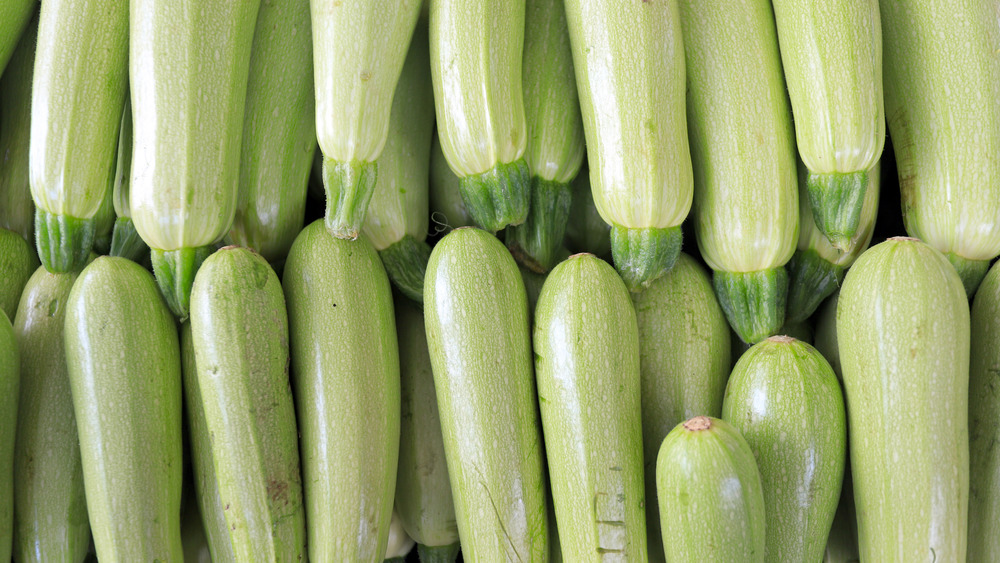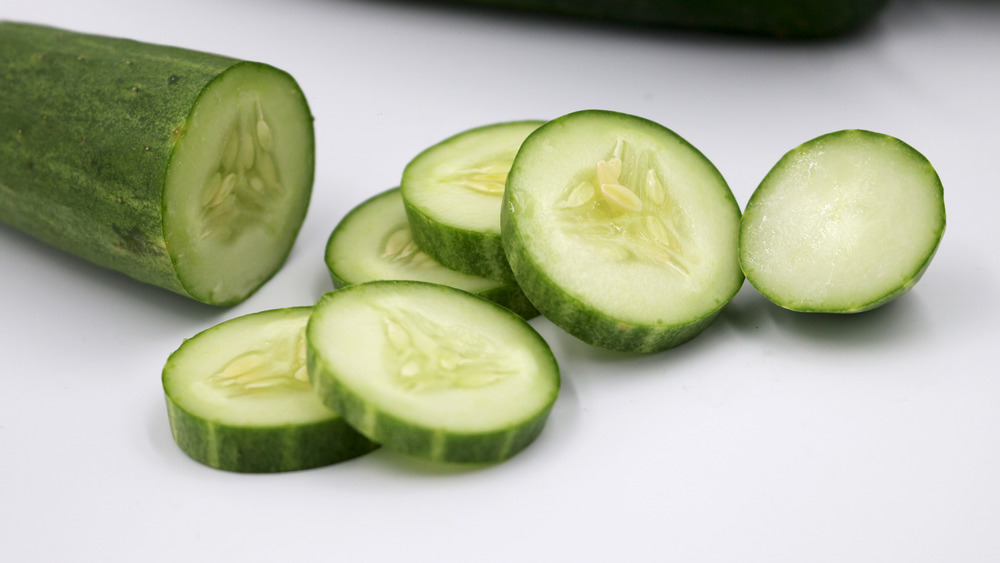The Big Difference Between Zucchini And Cucumber
Yams and sweet potatoes. Leeks and scallions. Puff pastry and phyllo dough. There are some things at the grocery store that are hard to tell apart. One more to add to the list? Zucchini and cucumbers. They're both green, both long and skinny, and both found in the produce section. You know the two are different — you just aren't sure why or how. Can you use them interchangeably? What makes one better than the other?
It can be confusing, especially given that there are a lot of similarities between zucchini and cucumbers. For starters, they're both technically fruits (via Spoon University) since they're grown from flowers and have seeds in the middle (the more you know!). Not only that, but they can also both be enjoyed raw and you can even substitute zucchini for cucumbers for making pickles (via Healthy Canning). However, there are some major differences between the two foods, namely in their appearance, texture, and flavor.
It's all about how they look and how they feel
You might not be able to judge a book by its cover but you can definitely judge a zucchini or cucumber by it – i.e., the two have slight differences in their appearance (via MasterClass). They're both cylindrical in shape, yes, but zucchini often have one end with a woody stem and the other may have a flower. You'll also notice when you cut into a zucchini that the flesh is white while the flesh of a cucumber has more of a pale green tint.
You can also tell a zucchini apart from a cucumber by how it feels on the outside and on the inside. A cucumber has a waxy, cooler exterior that's often bumpy as opposed to a zucchini, which has a warmer, smooth exterior. The inside of a zucchini is different from the inside of a cucumber, too, both in taste and texture. Spoon University describes a cucumber as "crisp and juicy" and zucchini as "heartier" and slightly bitter.

